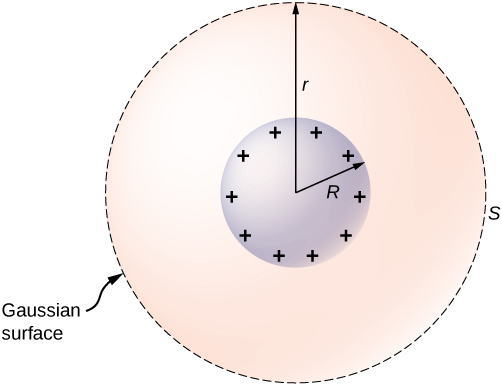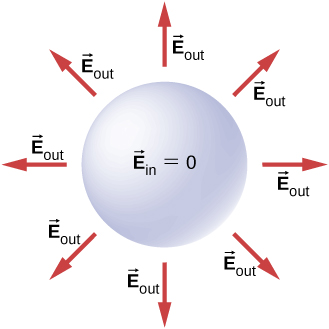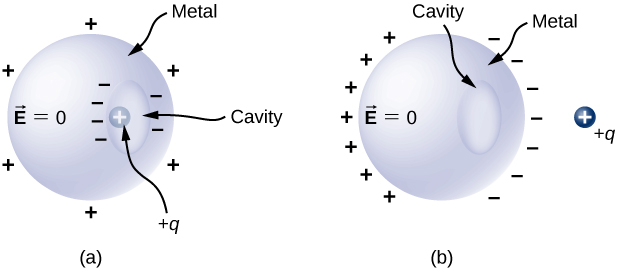| << Chapter < Page | Chapter >> Page > |

For , S is within the conductor, so and Gauss’s law gives
as expected inside a conductor. If , S encloses the conductor so From Gauss’s law,
The electric field of the sphere may therefore be written as

Check Your Understanding How will the system above change if there are charged objects external to the sphere?
If there are other charged objects around, then the charges on the surface of the sphere will not necessarily be spherically symmetrical; there will be more in certain direction than in other directions.
For a conductor with a cavity, if we put a charge inside the cavity, then the charge separation takes place in the conductor, with amount of charge on the inside surface and a amount of charge at the outside surface ( [link] (a)). For the same conductor with a charge outside it, there is no excess charge on the inside surface; both the positive and negative induced charges reside on the outside surface ( [link] (b)).


Notification Switch
Would you like to follow the 'University physics volume 2' conversation and receive update notifications?